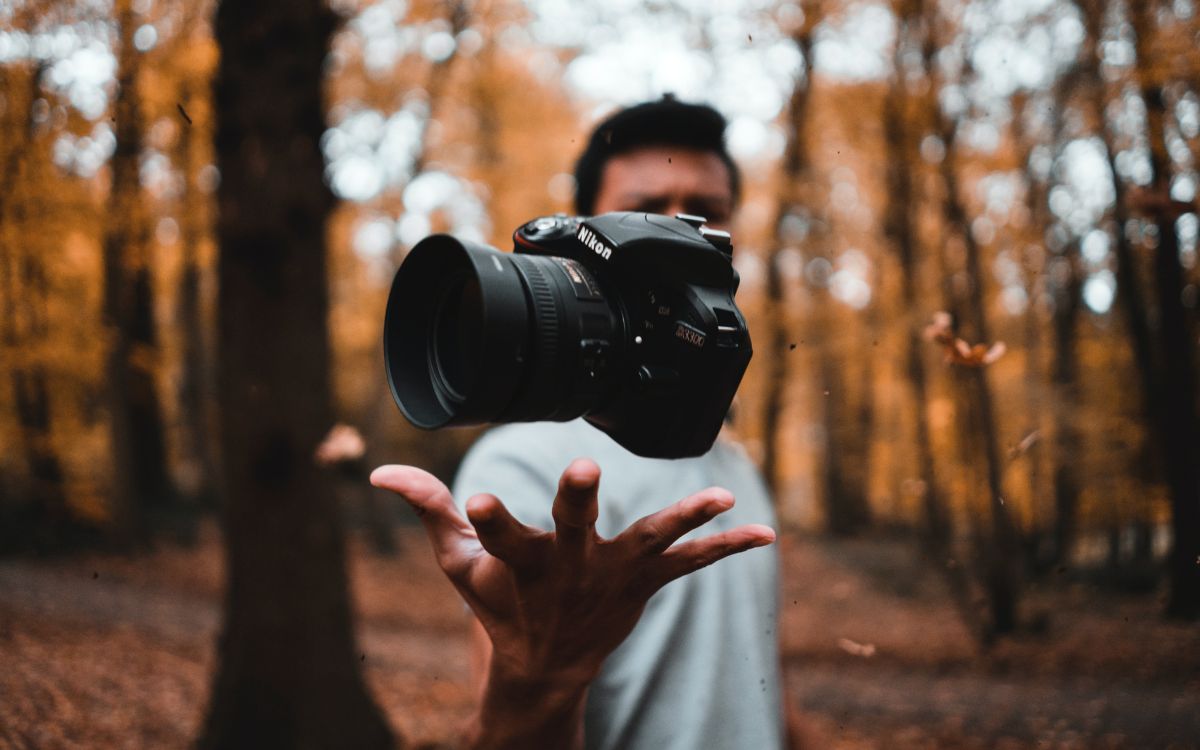YouTube recently uncovered more of the history and processes behind the YouTube Recommendation Algorithm. Why should you care? Well, you can take advantage of this information to help you improve your chances of getting seen by more potential viewers. In this article, you’ll learn how YouTube recommendations work and how to get recommended on YouTube.
Let’s start off with the basics...
What are YouTube recommendations?
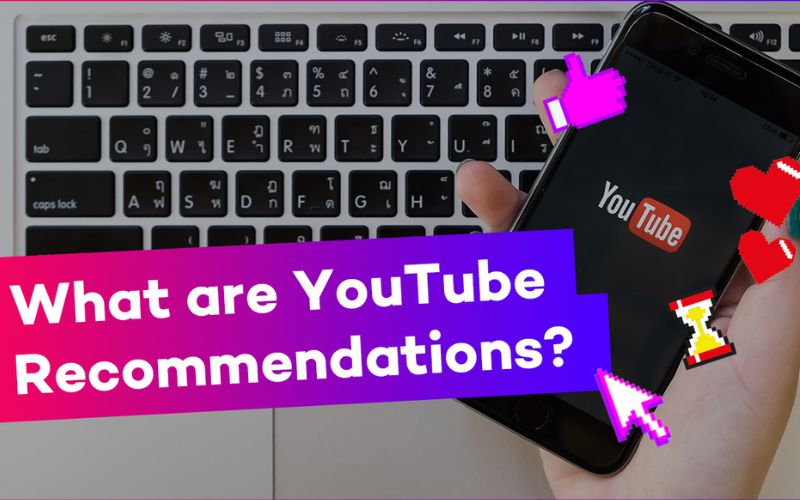
YouTube recommendations are the videos that YouTube puts in front of you as a suggestion of what you might want to watch (next). Recommendations are shared both on YouTube’s homepage and in the ‘Up Next’ section, next to or under a video you’re currently watching.
According to YouTube themselves ”Recommendations help you discover more of the videos that you love”. They basically help you decide what to watch if you’re not looking for anything in particular, or if you’re looking for inspiration on what to watch next. Of course, for YouTube, this is a way to make sure you have a more enjoyable time on their platform and hopefully stick around for longer. So,…
How does the YouTube recommendations algorithm work?
There are many different factors that determine what YouTube suggestions you’re served, and some are more important than others. It’s also something that YouTube is constantly reviewing and improving. Not just on a personal level, where recommendations get better the more it learns about your watching habits. It’s also on a site-wide level, with better machine learning and more and more factors used to determine suggestions. Let’s dive in and take a look at each of the main reasons YouTube thinks a particular video will be your bag!
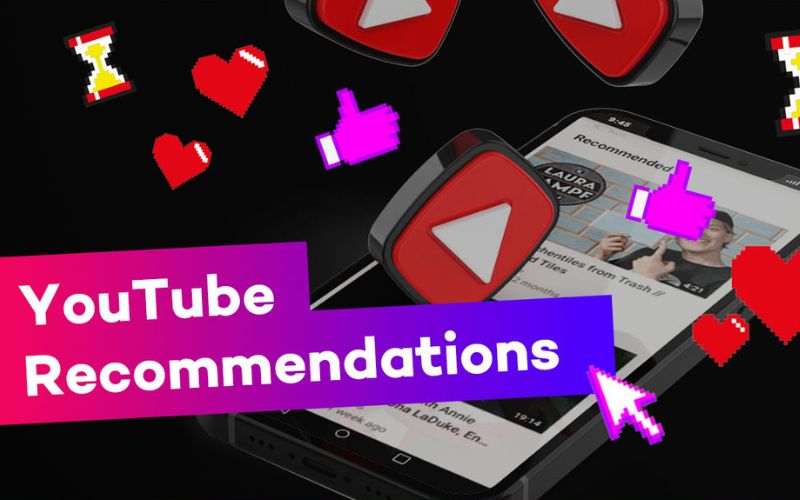
Previously viewed videos
Probably the most obvious and most important factor YouTube looks at is your previously watched videos. If you’ve clicked on and watched videos about dogs for example, chances are you’d be interested in watching something like that again. YouTube will recommend videos from channels you’ve watched before as well as other videos that are similar.
This is where the YouTube recommendation algorithm first started and it makes a lot of sense. However, just because you watched something before doesn’t always mean you’ll want to watch it again. That’s why there are many more factors that come into play…
Watch Time
A great example of one of these other factors is watch time. How does that work, you ask? Well, you probably already know this part: if you like a video, you’re more likely to watch it for longer and probably even until the end. Now, imagine you’re looking for a video to watch but the first few you click on weren’t very enjoyable or weren’t quite what you were looking for. They still count as previously watched videos!
If YouTube recommendations were solely based on previously watched videos, you might then get served a bunch of recommendations similar to those you didn’t enjoy. Doesn’t sound good does it? This is where watch time comes in. The video you eventually settled on will have a much higher watch time. This helps YouTube determine what you actually enjoyed and what you’d want to watch (and stick around for) again.
Shares, Likes, Dislikes
Another, perhaps more obvious way of YouTube finding out whether you enjoyed watching a video is by how you engaged with it. Pretty self-explanatory, but if you liked or shared a video, you probably enjoyed watching it and may want to watch something else similar. If you disliked, it’s pretty clear you didn’t enjoy it and so you may be served less videos like that in the future.
Authority
The final of our four main factors for YouTube recommendations is authority. Now this one is slightly less to do with whether you’ll like a video and enjoy it. It’s more to do with making sure that news and information you see is reputable, and that YouTube isn’t helping to spread misinformation and ‘problematic content’.
One example YouTube gives of this is videos promoting the idea that the earth is flat: “Someone may report that they’re very satisfied by videos that claim “the Earth is flat,” but that doesn’t mean we want to recommend this type of low-quality content.” (oof, better get some cold water on that burn, flat-earthers!)
YouTube also offers some further examples: “This includes conspiracy theory videos (“the moon landing was faked”) or other content that spreads misinformation (“orange juice can cure cancer”).”
To determine the authority of certain content, The YouTube recommendations algorithm asks a few important questions:
- Does the content deliver on its promise or achieve its goal?
- What kind of expertise is needed to achieve the video goal?
- What’s the reputation of the speaker in the video and the channel it’s on?
- What’s the main topic of the video (eg. News, Sports, History, Science, etc)?
- Is the content primarily meant to be satire?
“These answers and more determine how authoritative a video is. The higher the score, the more the video is promoted when it comes to news and information content.”
Other Factors
There are a few other factors aside from these top four that determine what videos YouTube recommends you. These include:
- Survey responses (where YouTube asks you to rate a video out of five stars and why)
- Further factors that determine authority and ‘responsible recommendations’. YouTube’s algorithm has been built to identify things such as racy or violent content, sensationalistic tabloid content, minors in risky situations and to make sure that the system is fair to marginalized groups such as the LGBTQ+ community.
How to get recommended on YouTube
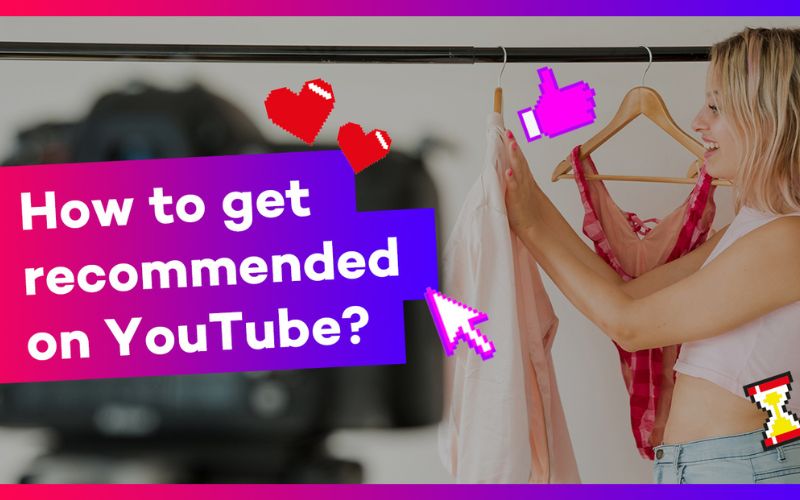
So, as a content creator, the obvious next question is how to get recommended on YouTube so more people see the content you’ve spent your blood, sweat, tears (and perhaps even eyelash glue) on.
It’s pretty much as simple as retro-fitting the factors mentioned above. So, what can you do to increase your views and watch time, and to improve your engagement and authority? If you can do that, YouTube will be more likely to recommend your video to more people. Here are some tips that should help get you started!
Views
Making sure you optimize everything about your video from the thumbnail to call-to-actions will help with this. For example, if you create custom thumbnails that are as eye-catching and intriguing as possible and optimize your title, people are more likely to click on your video, increasing views. You should also look to improve your video metadata such as the description and tags to be found easier.
Watch Time
At the beginning of your video, say something to convince your audience to stick around (so if you have a giveaway, for example, make sure to mention it at the beginning of the video and tell people to stick around until the end to learn how to enter). This should increase your watch time. The other, arguably more obvious way to increase your watch time is to make sure your content is as engaging as possible – but you’re probably constantly aiming for that anyway!
Engagement
How do you increase engagement? Well, that’s something we’re probably all quite familiar with. Add call-to-actions throughout your video like ‘Smash that like button, subscribe and hit the bell icon to be notified every time I upload’.
Also asking your viewers to comment throughout the video should get those viewers running to the comment box. Ways you can do this are asking for video suggestions, creating a word of the day (like Nikkie Tutorials), question of the day to get featured or asking engagement questions related to your video like ‘Let me know in the comments what your ride-or-die highlighter is’.
Finally, authority
Make sure you stick to the authority factors that YouTube looks at. Basically, don’t spread misinformation or create heavily clickbait content.
Music
Another proven way to increase views, watch time, engagement and more is by using popular music in your videos. Lickd offers chart-topping music for YouTube videos from major record labels that your viewers will actually have heard before. This has proven to improve stats across the board and so should help you get recommended on YouTube as well! You can get your first Lickd track for 25% off if you sign up now, so what do you have to lose?
Some more frequently asked questions about YouTube Recommendations:
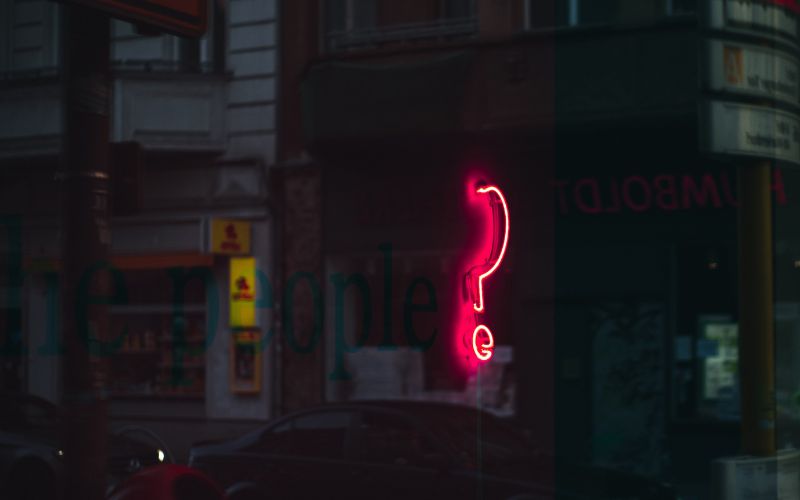
How to reset YouTube recommendations
If you’re tired of what YouTube is recommending you and want to start fresh, you can always clear YouTube recommendations and start again. To do this, you’ll basically need to delete all of your search and watch history. (As that means YouTube won’t have anything to draw from).
Here’s how to delete your watch history and clear YouTube recommendations:
- Click on your profile in the top right
- In the menu that appears, click on ‘Your data in YouTube’
- Scroll down to either ‘YouTube watch history’ or ‘YouTube search history’. Click on ‘Manage your YouTube search history’ at the bottom of either of those sections.
- You’ll be taken to a page where you can delete your history. On the ‘delete’ dropdown menu, select ‘all-time’ to delete all activity associated with your account. You can also select a specific time period if you know there are certain videos influencing your recommendations. (Maybe you went through a K-pop phase or your dad used your YouTube account to watch car videos..?)
How to change your YouTube recommendations settings
After deleting your history, inevitably as you watch more videos, YouTube will get to know you and create more tailored suggestions again. So if you don’t want that, you can also remove YouTube recommendations entirely. YouTube will still show you video suggestions, but they won’t be tailored to you, based on your history.

There are 2 ways to do this. First is to stop YouTube from using your history. You can do this by going back to ‘Your data in YouTube’ and clicking on ‘YouTube Watch History’ where there’s a blue tick and the word ‘on’.
This will take you to a page where you can untick ‘Include the YouTube videos you watch’ and/or ‘Include your searches on YouTube’.

Secondly, if you want something a little more drastic, you can turn your YouTube History off entirely with the toggle. This means YouTube won’t keep track of any of your search or watch history whatsoever.
Now you know everything there is to know about YouTube recommendations! So, what is Lickd?
If you want to pump up your YouTube channel stats, consider adding some energy to your videos with chart-topping music. Lickd has thousands of big-name songs that you can search by artist, label, mood, and more. Lickd music is 100% legal and claims-free, so you’ll never have to worry about royalty payments, copyright claims, or blocked videos.
If you sign up today, you get a 14 days of stock music for free and 25% off your first mainstream track! With Lickd music for YouTube videos, you’ll start attracting more viewers and boosting engagement in no time.
